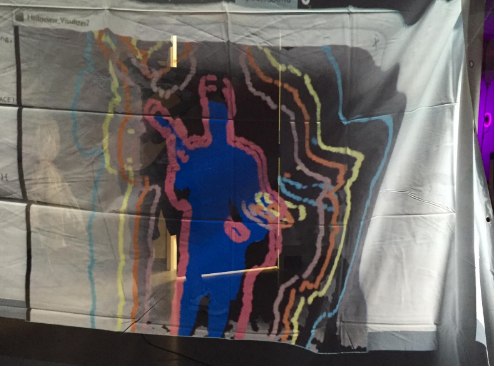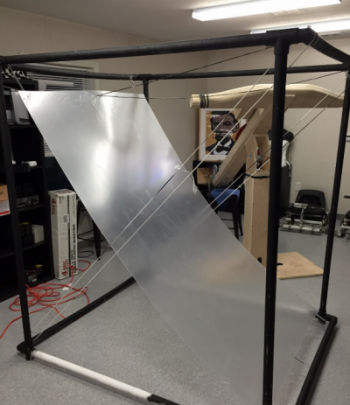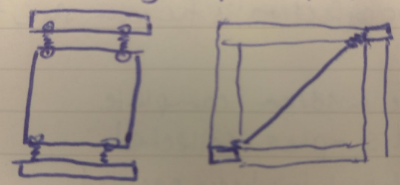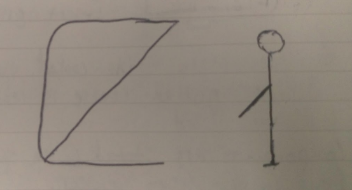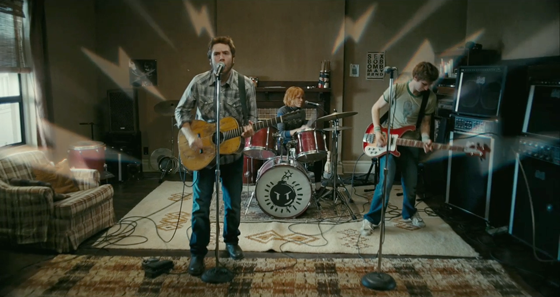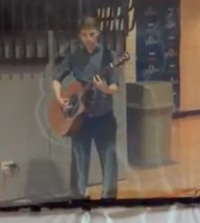development
The HoloView Performance Viewer (formerly HoloView Standing Prototype) was the final iteration of the HoloView research endeavor. Inspired by the success of their midterm project, Alec Leeseberg and Alan Young continued with the HoloView Performance viewer for their final project in CRT101: Prototyping Basics. We knew that we wanted to build a “full-size” version of HoloView Interactive, we just weren’t sold on any interactivity that couldn’t have been done better and easier using other augmented reality methods. While watching the movie Scott Pilgrim vs. The World, I came up with the idea of trying to recreate the musical title sequence. The movie is highly stylized and has animations superimposed on the real-world image of the film. The advantage HoloView would have over other types of augmented reality would be that instead of viewing the augmentation through a screen, viewers would be watching the true, live performance.
The HoloView Performance Viewer was going to be of solid metal construction. Iron bars were going to be welded together to form the frame for the PETG. The PETG was to be secured by springs attaching to each of the corners of the sheet. A projector was going to be placed above the frame, projecting onto a white sheet that would collect the image. Because the height of the projector needed at least 2.5 feet of throw distance the height of the HoloView Performance viewer became roughly 9 feet tall. The difficulties of building a secure rig to hold the projector up 9 feet in the air prompted the decision to have the projector below the performance. Because of the fully realized size of the HoloView Performance Viewer, the material of the frame was switched from iron to PVC pipe, sacrificing stability for a much lighter weight. Tightened ropes were added, opposite the PETG to compensate for the stress put on the frame due to the sheet’s weight and tension. The HoloView Performance Viewer debuted April 12th, 2016 at the Berry College Symposium.
The Prototype
In order to produce the desired effects, an XBOX Kinect is attached to the frame, pointing towards the performing artist. The artist’s silhouette is captured, as long as they are within range. This input is then sent through Processing, where visuals are added to the silhouette. For the Berry College Symposium, a randomly-colored outline of the artist was created every time the computer recognized strumming from the 1/4″ to USB adapter. This is then projected onto a white shower curtain, which gathers the image to be refracted by the PETG. Due to the poor lighting in the Berry College Cage Center where they symposium was, the effect of the HoloView Performance Viewer was diminished, but still visible. Nonetheless HoloView was very well received.
further materials
HoloView Performance Viewer Poster
Rome News Tribune’s article on HackBerry Lab, featuring HoloView


